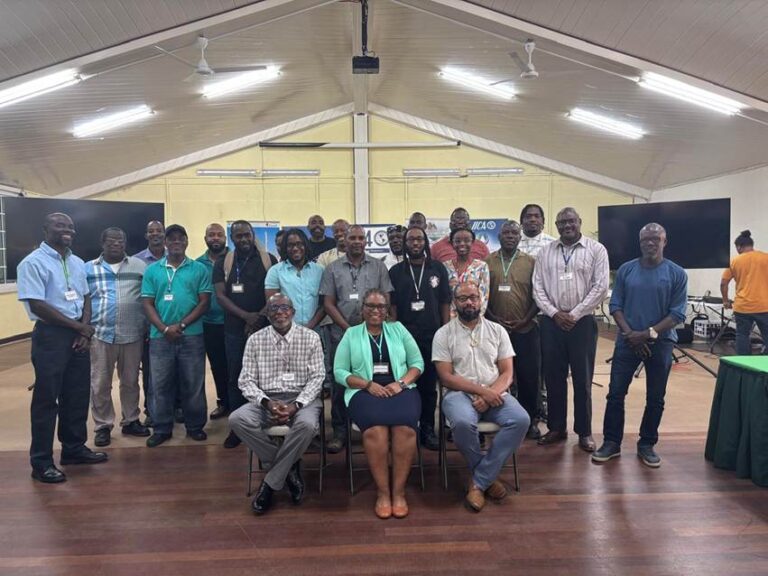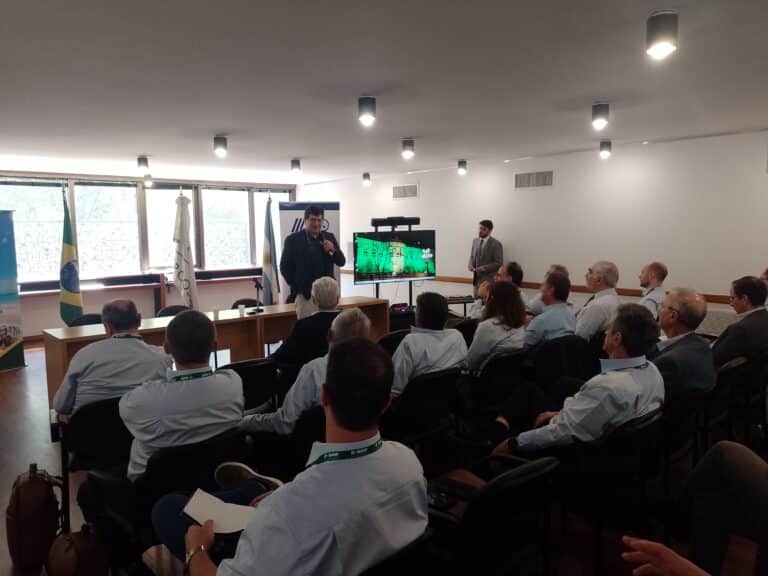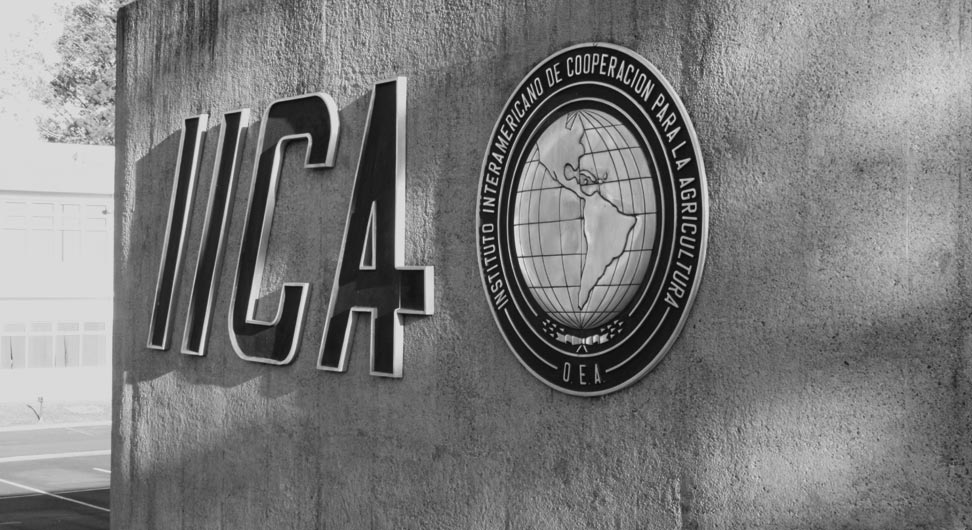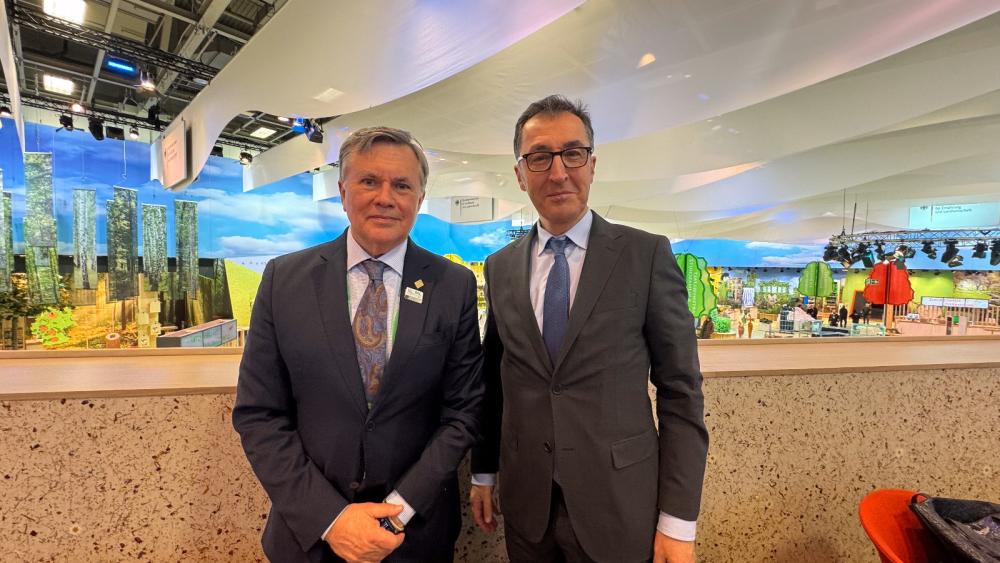
Turrialba, Costa Rica, 3 June 2025 – More than twenty rural youth and women from the Eastern Caribbean on a study trip to Costa Rica visited the Tropical Agricultural Research and Higher Education Center (CATIE), where they were informed about production best practices and the application of new technologies in agriculture.
Agricultural ministers from the region also participated in the mission, which was organized by the Organisation of Eastern Caribbean States (OECS) and the Inter-American Institute for Cooperation on Agriculture (IICA). Both organizations are intensifying their cooperation efforts to enhance the productivity and welfare of rural communities in these island nations, which are extremely vulnerable to extreme climate events.
Located in Turrialba, Cartago province, CATIE is a prominent Latin American and Caribbean academic center in the area of agricultural innovation and sustainable development. It is a leader in the integrated management of agriculture and natural resources to tackle global challenges, and it has a close historic relationship with IICA.
In welcoming the visitors, CATIE Director General, Luis Pocasangre Enamorado, pledged that, “This is just the beginning of our working relationship to strengthen agriculture in your countries. We conduct research and development of tropical crops that are prevalent in the Caribbean”.
The OECS is a group of twelve island nations in the Eastern Caribbean and six of its founding members are also members of IICA, namely Saint Lucia, Saint Vincent and the Grenadines, Grenada, Dominica, Antigua and Barbuda and Saint Kitts and Nevis. These countries have received IICA technical and financial assistance in recent years to boost their productivity, resilience and sustainability.
The mission began with two days of activities at IICA Headquarters in San Jose, including meeting with the IICA Director General, Manuel Otero. The visitors then travelled to CATIE.
The rural youth and women—who are from Antigua and Barbuda, Dominica, Grenada, Saint Kitts and Nevis, Saint Lucia, Saint Vincent and the Grenadines, Anguilla, the British Virgin Islands and Montserrat—were accompanied by the Director General of the OECS, Didacus Jules; Minister of Agriculture, Fisheries, Food Security and Rural Development of Saint Lucia, Alfred Prospere; Minister of Economic Development, Planning, Agriculture and Lands, Forestry, Marine Resources and Cooperatives of Grenada, Lennox Andrews; the Permanent Secretary of the Ministry of Agriculture, Lands, Fisheries and the Blue Economy of Antigua and Barbuda, Walter Christopher; the Permanent Secretary of Agriculture, Fisheries and Marine Resources of Saint Kitts and Nevis, Miguel Flemming; and the Parliamentary Secretary of Agriculture, Lands, Housing, Environment, Youth Affairs and Sports of Montserrat, Dwayne Hixon.
Coffee, cocoa and banana
The youth were taken on a tour of CATIE’s international coffee collection, which was established in 1949. The collection, which spans twelve hectares, is the fourth largest in the world and the second largest in the Americas. It boasts a multitude of varieties of Arabian coffee, the main coffee species in the world.
The visitors also toured the valuable cocoa collection, which preserves the greatest genetic diversity of the species in the region. Established more than eighty years ago, it plays an invaluable role in conservation, research, genetic improvement and the distribution of materials to benefit the family farming community, academia and the global chocolate industry.

Pocasangre Enamorado explained that CATIE has developed cocoa varieties that have increased productivity eight-fold (to more than 2,000 kilos per hectare per year) and benefited farmers, by ensuring more widespread resistance to diseases.
The Caribbean youth and women also visited conventional and pesticide-free banana plantations, where they learned about methods to prevent the spread of the Fusarium Tropical Race 4 (TR4) disease, which has already been detected in the Americas and is a threat to farmers’ food security and income.
The CATIE Director General showed them the simple and economic disinfection infrastructure established on the plantations to prevent the spread of the disease. He stressed that, “It is essential that Caribbean farmers adopt this simple disinfection method to prevent the entry of TR4, because once it enters a country it cannot be eradicated. That is the message that you have to pass on when you return to your countries”.
Land and financing
Heather Moise, a young Saint Lucian farmer, explained that she was from a rural family. Her father had a banana plantation, and her grandparents were sugar cane farmers. “This meeting is very important, as it allows us to meet and network with farmers from other Caribbean countries and Costa Rica. I have learned a great deal about crops like cocoa and pineapple”.
Moise noted that the two greatest obstacles facing Caribbean farmers are access to land and financing.
Lindell Daniel, a hydroponic farmer from Grenada, noted that, “Many young people in my country are becoming more involved in the food sector. There is an increasing interest in agriculture, for example in different aspects of livestock farming and the processing of raw materials”.
“I knew that agriculture was my destiny, because my father is a well-known farmer in Grenada. I started my own venture from a young age and developed an interest in hydroponics”, he added.
Jaivaughn Richardson, from Anguilla, noted that, “I grow edible flowers and I have a new initiative that I plan to launch. I am extremely grateful for the opportunity and appreciate seeing these new perspectives on agriculture”.
“There are not many farmers in Anguilla”, he said. And the few that are involved in the sector mainly use traditional techniques. This visit to Costa Rica introduced me to new initiatives that can be adopted in Anguilla. Access to financing and education are key factors in attracting youth to agriculture”, he noted.
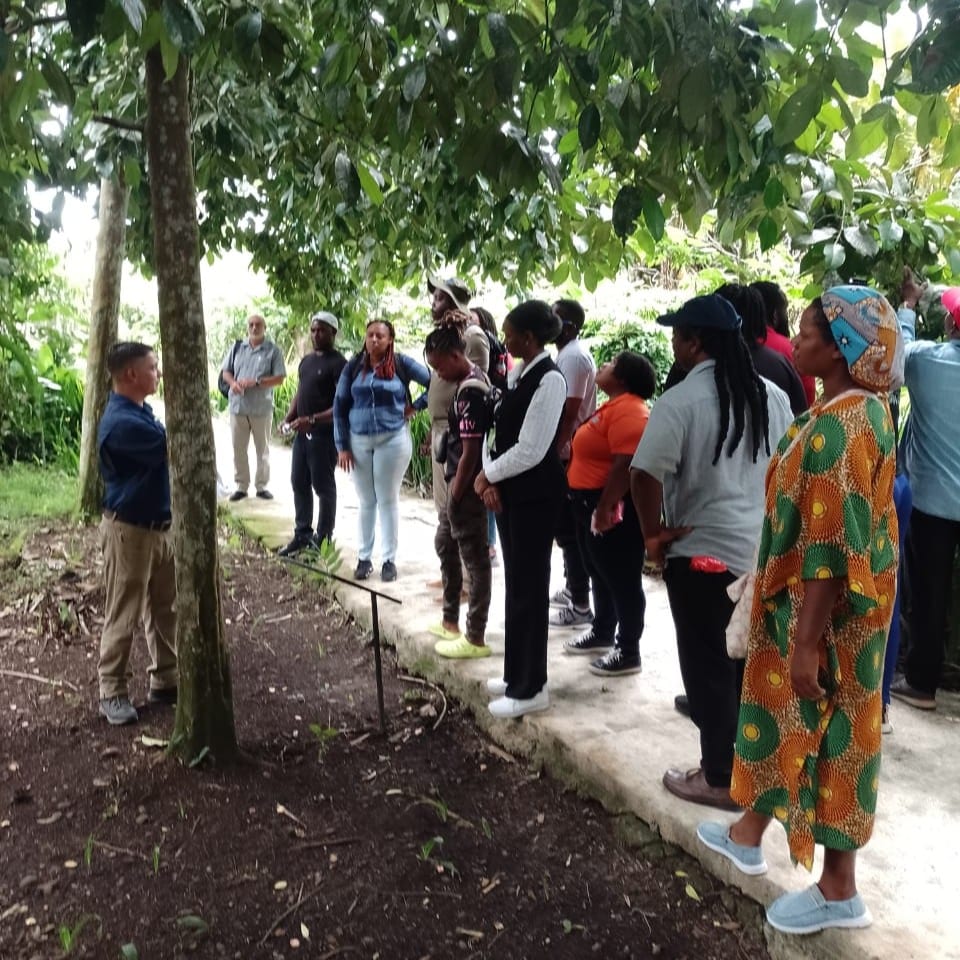
More information:
Institutional Communication Division.
comunicacion.institucional@iica.int

